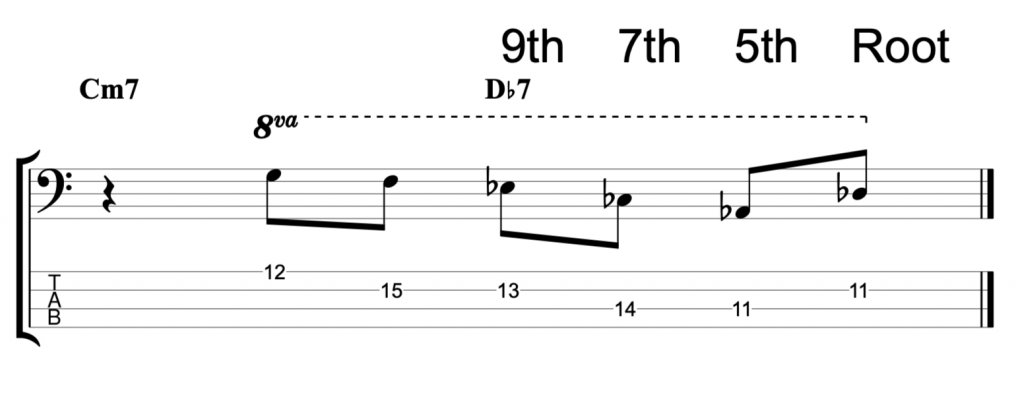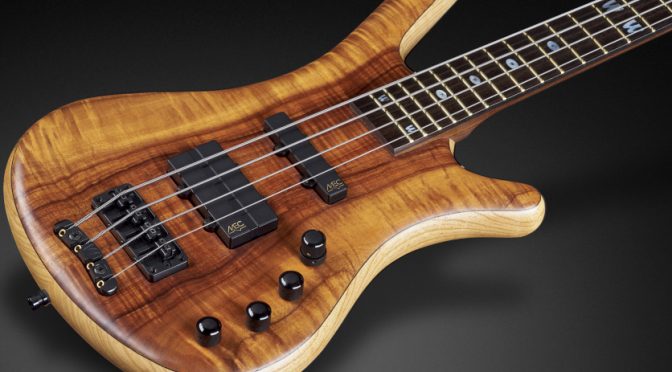John Coltrane Jazz Lick on Bass Guitar – Bass Practice Diary – 19th February 2019
This week I’m breaking down another jazz lick on bass guitar. And I wanted to take on one of the all time great jazz improvisers, John Coltrane.
So, I was reading through the bass clef John Coltrane Omnibook trying to choose where I should start. And I decided I should start by looking at how he played over what are know as the Coltrane Changes. Or the Coltrane Matrix as it was called when I was taught it at music college.
Coltrane Changes
The Coltrane changes are a sequence of chords that take you through three keys. Each key is a major third away from the previous key. So, the progression always resolves back into the original key. Because an octave divides perfectly into three major thirds.
John Coltrane used this progression as a substitution for a standard II – V – I progression. Coltrane used this substitution in his composition Countdown from the Giant Steps album. The Countdown chord progression is a reharmonisation of the jazz standard Tune Up.
The Lick Arranged for Bass
So, I’ve arranged one of John Coltrane’s licks from Countdown for bass guitar. The lick takes place over three bars and encompasses all three key changes. It starts like this.

The first chord, Cm7, is chord II in the key of Bb major. If you’re going to analyse the first two notes in terms of their relationship to the chord then they would be 5th and 11th. But I feel like in this case, Coltrane was just using two notes from the key of Bb major to lead into the new key. Which is why I haven’t written 5th and 11th above the notes.
The Db7 chord is chord V in the new key, Gb major. From this point on, it’s really interesting to see how many chord tones John Coltrane uses in his line. So I’ve written the chord tone relationships above the notes. Here’s the second bar.

In this bar, the key changes from Gb major to D major (A7). You’ll notice that virtually every note he uses in this lick is either root, third, fifth, seventh or ninth. The only note that isn’t in this bar is the Ab passing note between the root and seventh of the A7 chord.
Using Chord Tones
His approach might seem quite simplistic on the face of it. It would certainly seem like a simplistic way of building lines if you were to apply it to the standard, unaltered II – V – I progression. But, if you look at it in context with the chord progression, it makes complete sense.
He’s using this incredibly cool substitution, which features constantly moving harmony. And he wants his line to reflect the substituted harmony. If he filled his line with chromatic alterations and extensions, then the underlying chord progression could quickly become unrecognisable. Here’s bar three.

In this bar the key returns to the original Bb major (F7). The pattern used on the Dmaj7 chord is very typical of the 1, 2, 3, 5 patterns that Coltrane loved to use around this period. Which is why I’ve put 2nd in brackets next to the 9th, E. Here is the full lick.

John Coltrane Improvisation Style
Analysing these licks is like getting a lesson in jazz improvisation from one of the masters. This lick is very typical off what John Coltrane was playing in the late 1950’s. But, during his career he went through several different stages. Each featuring a different approach to improvising. So I have no doubt that I will be analysing more Coltrane licks in the near future from different stages of his career.
In the mean time, why not check out this Jaco Pastorius Jazz Lick. Or if you’ve already seen that you can check out one of my own jazz licks here. And here is an example of a diminished jazz blues lick. Enjoy!


2 thoughts on “John Coltrane Jazz Lick on Bass Guitar – Bass Practice Diary 44”
Comments are closed.